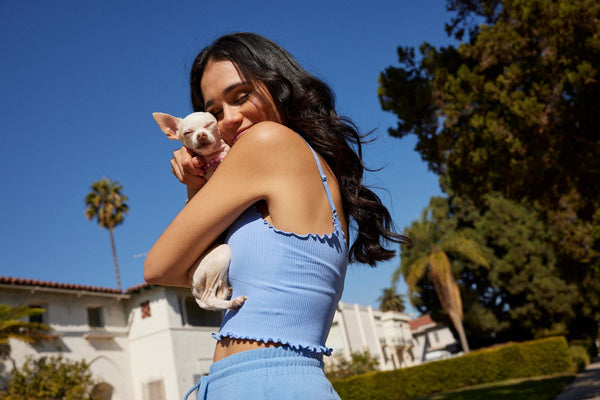By: Sara Ondrako, Certified Canine Behavior Consultant
Congratulations, you’re a new puppy parent! Part of the fun in bringing home a new puppy is shopping for cute fluffy beds that match your decor, creative toys, matching leash-collar-poop bag ensembles, and other items that will make your puppy feel right at home.
As a behavior professional, I love to be prepared for all things puppy when a new fluffy bundle of joy joins the family (or not-so-fluffy if you have a hairless Xoloicuintle pup). Puppyhood can be super fun, but it can also be quite exhausting at times. My years of experience in puppy parenting have helped me compile a go-to checklist for bringing your new pup home! This list has everything you need to start your puppy’s new life on the right paw.

Nutrition
- Puppy food
- Dog treats
- DHA/EPA
Puppies love eating, but it’s not simply about what tastes good. Choosing high-quality food for your dog can help set them up for a lifetime of health and wellness. With the guidance of several board-certified veterinary nutritionists, here are the things that I now look for when curating a puppy’s diet:
- Puppy food containing limited ingredients, with a whole-meat protein listed first (bonus if they add in organs such as heart and liver).
- Avoid puppy food and dog treats where peas, legumes, lamb, and novel proteins such as kangaroo or bison are among the first ten ingredients on the bag.
- Puppies whose diets contain Omega 3s (DHA and EPA) have been shown to out-learn puppies not given Omega 3 supplements during development. These Polyunsaturated fatty acids (aka PUFAs) are essential for cognitive function. Add Native Pet’s once-daily Omega Oil to your puppy’s food to boost their brain function.
- Human-grade food means that all ingredients are cooked separately, so each component reaches a maximum nutritional value (isn’t over-cooked or undercooked), and the quality of the meat is fit for human consumption (doesn’t contain diseased or rendered animals).
- Whether you choose kibble, freeze-dried raw, or fresh food, incorporating safe, fresh foods and limited ingredient supplements for variety can ensure your puppy is getting a healthy mix to feed their gut, brain, and body. Some examples include lightly boiled (skin-on) sweet potatoes, plain boiled chicken, raw broccoli, blueberries, pomegranate, pumpkin powder, fresh sardines, and organic plain greek yogurt.

When picking out morsels that will communicate to your puppy, “yes! I love that behavior; do that again!” the options are limitless. I primarily use high-quality puppy kibble to load up my pouch of training treats and then pick three higher-value treats to sprinkle into the kibble. Most of the time, the puppy will receive a piece of kibble as a reward. Every once in a while, a super tasty treat will be delivered, keeping them engaged and happily motivated. Always remember, with treats – moderation is vital. Some training treats are like eating a cupcake when you have a sweet tooth, while the healthier options are like eating fruit to satisfy a sweet craving. It’s okay to have a cupcake every now and then, but the bulk of your pup’s treats should be healthy options with limited ingredients.
Training Supplies
- Puppy Training Classes
- Hands-free leash
- Collar (with identification)
- Longline
- Treat Pouch / Bait Bag
- Tug Toy and/or Ball
- Poop Bags
Puppies are like little sponges – they constantly absorb information and learn at an incredible pace. Start by finding a reputable positive reinforcement trainer. You should also sign up for group puppy classes or private lessons with a socialization (social exposure) component. You can find a certified dog trainer through the IAABC or CCPDT directory.
The first two weeks with your puppy at home is the honeymoon phase. It’s considered the adjustment or getting-to-know-you period, in which you establish daily routines, start bonding, and build the foundation period of your relationship. Embrace the honeymoon phase, and schedule your training to begin after those two weeks. Be aware that trainers often book a few months in advance, so you may want to schedule your classes before your puppy arrives.





